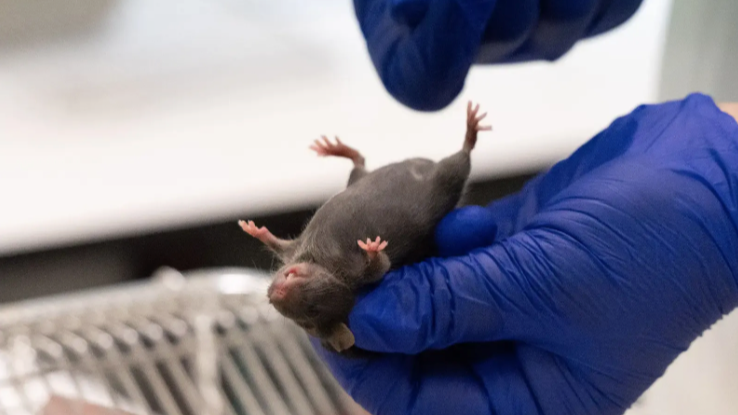France - 2018 EU animal use in research statistics
- Bob Tolliday
- Jul 15, 2021
- 4 min read
Updated: Jul 16, 2021

The French biomedical research sector has welcomed the publication of comprehensive statistics, from across the EU, including France, on all uses of animals in scientific, medical and veterinary research in 2018.
The headline figures in the European Commission report show that the total number of animals used in the EU in 2018 was 8,921,758 - slightly lower than in 2017 (9,388,162). In 2018, 88% of the total were mice, fish and rats, whereas dogs, cats and monkeys account for around 0.3% of the total – for the first time these percentage figures also included Norway.
The total is made up of animals used in basic and applied research, and regulatory studies aimed at ensuring the safety of medicines and other products, routine production and education and training.
EU statistics were also released for animal use in France in 2018 although these have been superseded by the national release of the 2019 statistics. According to the EU statistics, the most used animals in France in 2018 were mice, rats, and fish, which represented 85% of the total – dogs, cats, and monkeys made up 0.3% (see also the case study and Notes to Editors below).
France’s biomedical sector confirmed its commitment to openness, earlier this year, when 30 institutions signed a Transparency Agreement to communicate in a more open way about how animals are used in research.
According to the EU statistics, the top three EU countries for animal use in 2018 were France 1,752,906 (2017 - 1,757,837), UK 1,749,901 (2017 - 1,839,079) and Germany 1,629,228 (2017 - 1,793,299).
Dogs can be used to test new drugs before clinical trials are conducted in humans, while monkeys are also used in drug testing and have played a significant role in research in AIDS and developing treatments for Parkinson’s disease, as well as the Covid-19 vaccine during the 2020-21 pandemic.
EARA executive director, Kirk Leech, said: “This year we have seen the vital contribution that research using animals has had during the Covid-19 pandemic. At a time of growing activist pressure on the European Commission to immediately end the use of animal research, these annual statistics demonstrate the commitment the biomedical sector is showing to being open and transparent about the important work it does.”
Separate figures were also produced to record the number of animals used for the creation and maintenance of genetically altered animal lines, across the EU-28 (plus Norway) in 2018 this was 1,520,791 (in 2017 the figure for the EU-28 was - 1,276,587).
Case study Bringing back vision to patients with the use of monkeys Researchers from the Paris Vision Institute, France, have made further groundbreaking advances with a potential therapy to restore sight in humans.
Although medical devices that stimulate the retina can restore some vision, patients are still not able to recognise faces or move independently.
To gain sharper visual perception, the team developed in monkeys an optogenetic therapy – a technique that involves the use of light to control brain cells.
These results lay the groundwork for an ongoing clinical trial for vision restoration in human patients who have a genetic disorder of the eyes that causes a loss of vision called retinitis pigmentosa.
Previously, scientists at the Institute developed a retinal device, which was tested in monkeys, prior to the clinical trials that are currently ongoing in patients affected by age-related macular degeneration.
“The study in monkeys allowed the Vision Institute to create an effective optogenetic therapy that could have a positive impact in patients suffering from some types of blindness.” Serge Picaud, Research Director at Institut de la Vision, Paris, France
End
Notes to the editor
Animal research is strictly regulated under the EU Directive 2010/63. Every procedure, from a simple blood test to major surgery, requires individual, establishment and project licences, as well as approval from animal welfare and ethical review bodies.
Most of the medicines we have come from animal research. Often science doesn’t need to use animals, but for many key questions they are crucial.
Animals are used alongside several other techniques such as cell cultures, human studies and computational models. These methods are used – often in tandem – to answer the key biological questions necessary to understand and treat disease. Before an animal model is selected, researchers must show that the knowledge could not be acquired using non-animal methods.
All organisations are committed to the ‘3Rs’ of replacement, reduction and refinement. This means avoiding or replacing the use of animals where possible; minimising the number of animals used per experiment and optimising the experience of the animals to improve animal welfare. However, as institutions expand and conduct more research, the total number of animals used can rise even if fewer animals are used per study.
Since 2013, it has been illegal to sell or import cosmetics anywhere in the EU where the finished product or its ingredients have been tested on animals.
About EARA The European Animal Research Association (EARA) is an organisation that communicates and advocates on biomedical research using animals and provides accurate, evidence-based information. It has 117 partner organisations, including private and public research bodies, universities, regional and national biomedical associations and suppliers, across 21 European countries.
End



